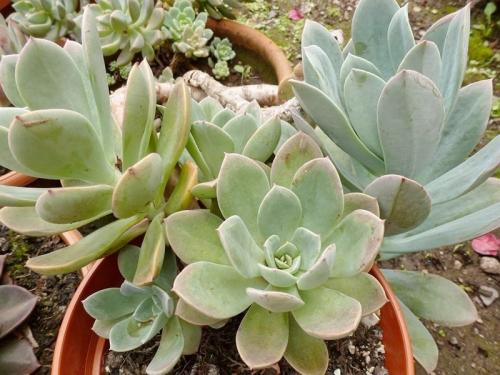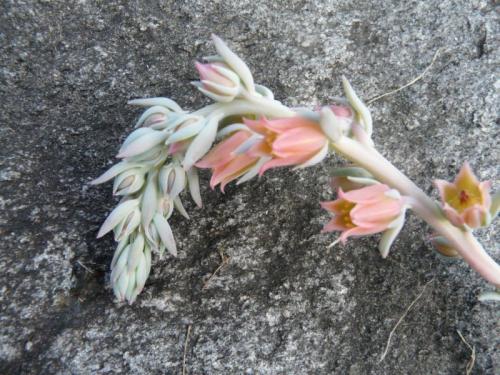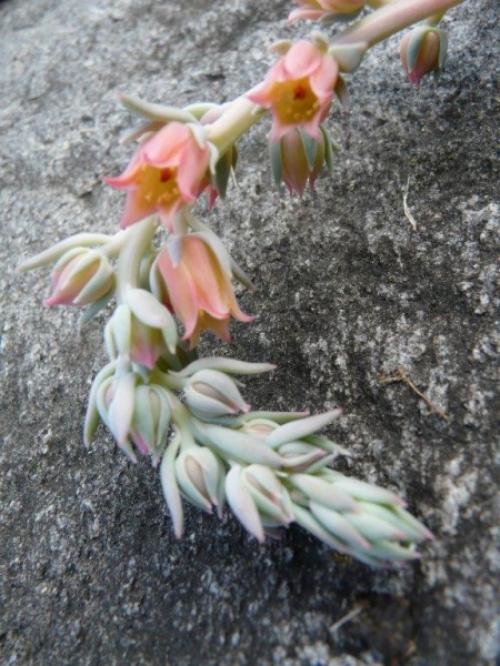OREOPHILA Kimnach, 2002 (engl./ fr.)
Series Racemosae
Type : Bauer & Kimnach 10, collected in 2000 - a cultivated plant from Cumbe Mayo, ca 6 miles SW of Cajamarca, said to be native on nearby high peaks, ca 3000 - 3500 m.
Etymology : Greek "oreios" = pertaining to mountains, and "philos" = friend : for the occurrence in mountains.
Distribution : Peru (Dept.Cajamarca, Prov. Cajamarca, possibly also in the adjacent provinces of Cajabamba and San Marcos and in the Dept. of La Libertad); 2500 - 3400 m.
First Description by Myron Kimnach in Cactus and Succulent Journal (US) 74(6): 290-293, ills., 2003 :
Plant entirely glabrous.
Stems to 15 cm long or more, 15 - 25 mm thick, glaucous green when young, later tan.
Rosettes slowly proliferous, 11 - 15 cm wide,.
Leaves 20 - 23, widely obovate with a nearly truncate apex, with a reddish mucro 1 mm long and 2 mm wide, upcurving, slightly concave and often channelled on upper side, convex beneath and keeled for half to three-quarters of their length, 5 - 7 cm long, 35 - 45 mm wide ca 2 cm below apex, 10 - 15 mm wide at leaf-base, 2 - 4 mm thick, pale green with a sparse glaucous bloom, margins and exposed portions reddened in strong light.
Flowering stems 1 o r 2, equilaterally racemose, unbranched, 12 - 20 cm tall or more, peduncle and rachis smooth, lower bracts erect-expanding, ovate-oblong, acute, upper side slightly concave, lower side slightly obtuse and keeled for most of length, ca 12 mm long and 10 mm wide, inflorescence 11 - 13 cm long, flowers erect-expanding, each subtended by an ascending, elliptical, acute, glaucous bract ca 4 mm long, pedicels ascending, 2 - 4 mm long.
Flowers : Sepals erect to somewhat expanding, ovate-lanceolate, acute, 4 - 6 mm long, glaucous, petals recurving at apex, ca 12 - 14 mm long, uniformly rosy red, slightly glaucous.
Link to a French summary of the above description.
Note :
In habitat Echeveria oeophila is fairly variable. It seems to be restricted to the southern part of the Dept. of Cajamarca. Not at all present there is E. excelsa, while E. eurychlamys has frequently been collected. However E. oreophila is more closely related to E. wurdackii and E. utcubambensis than to E. eurychlamys.



Photos Margrit Bischofberger